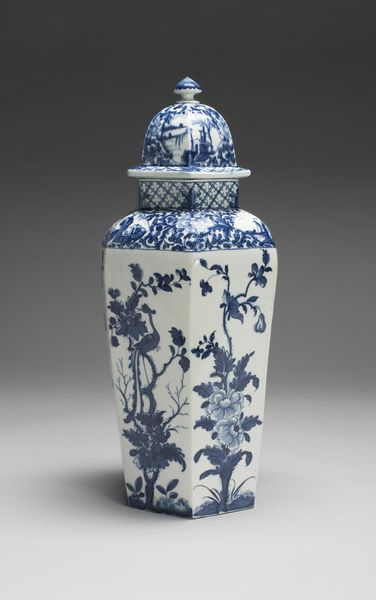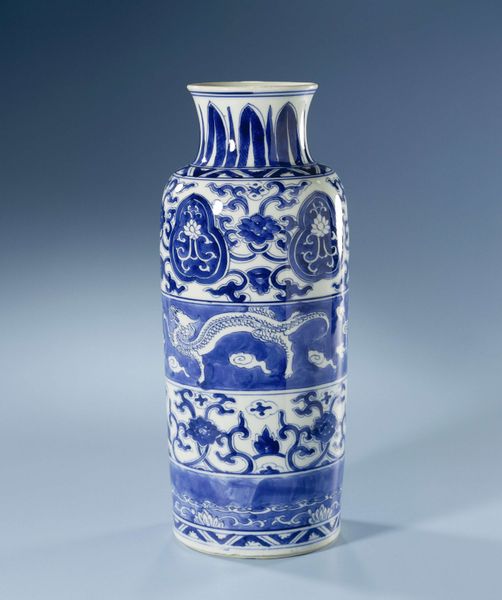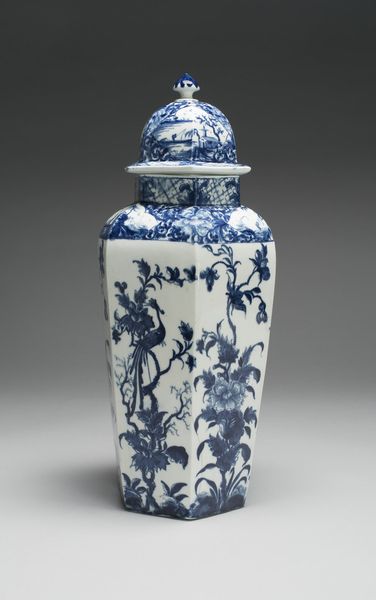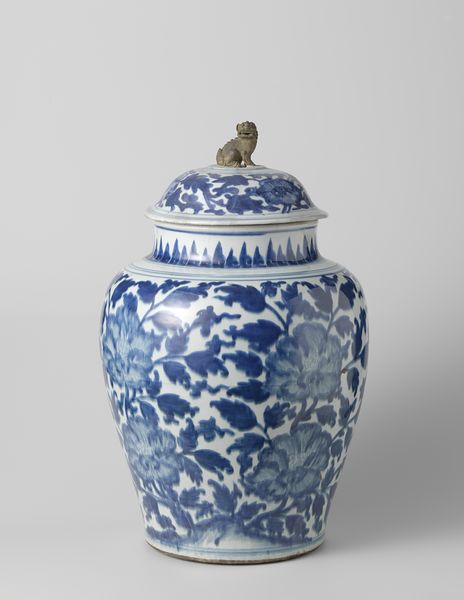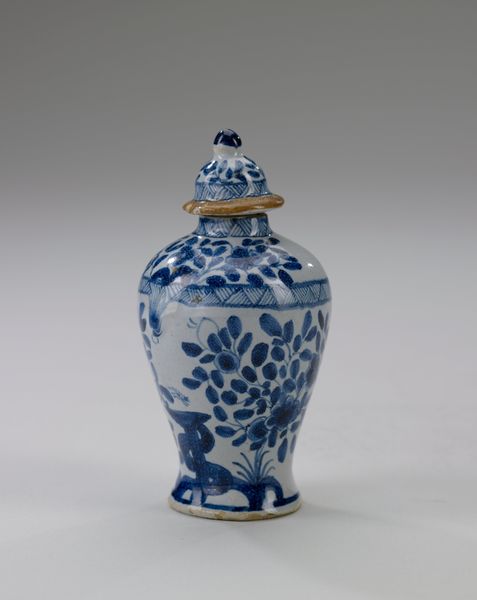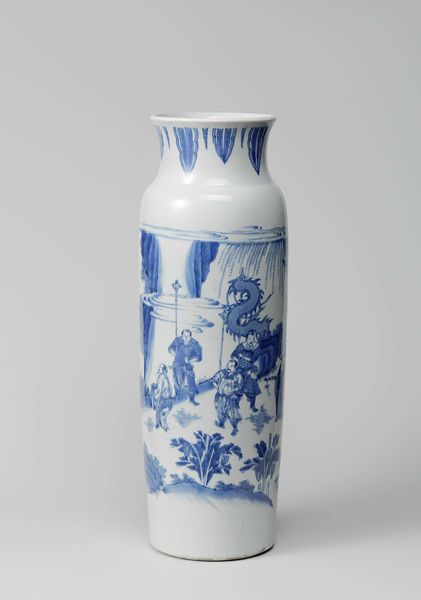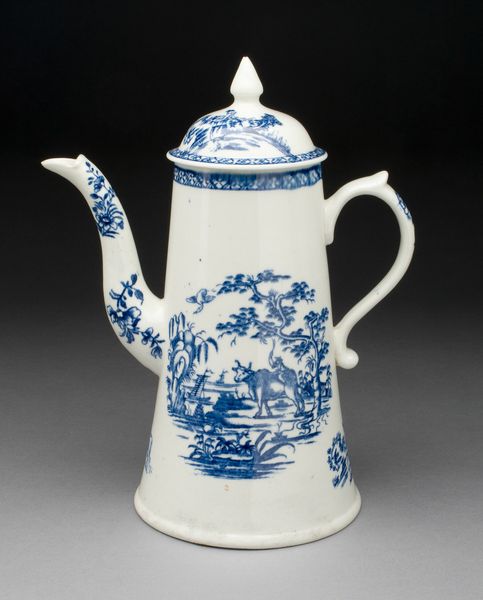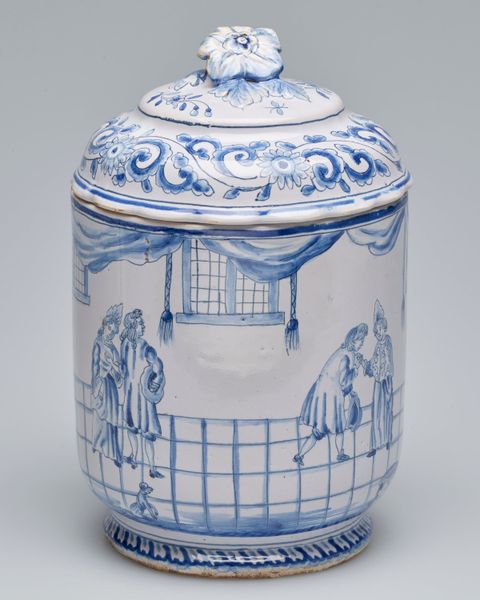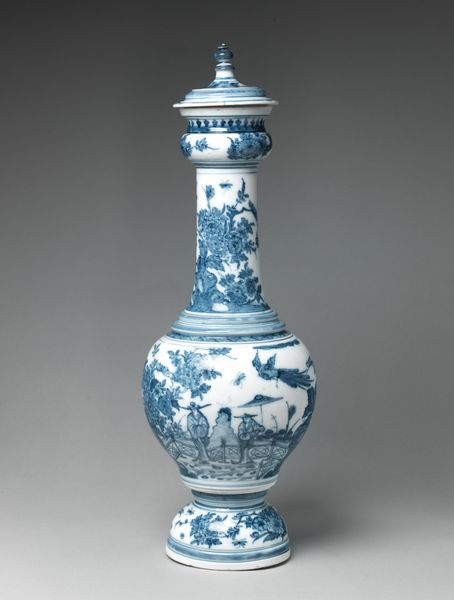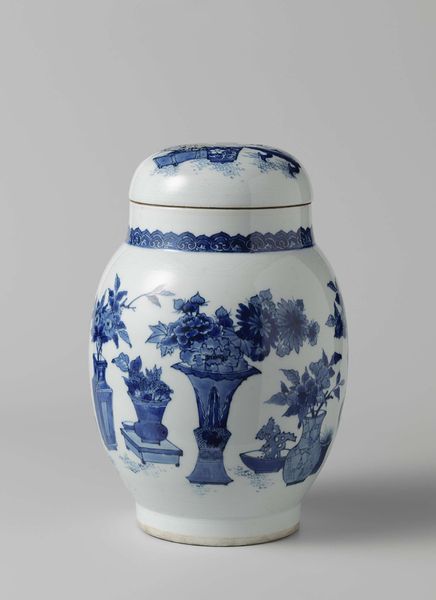
Dimensions: 10 1/4 x 6 5/16 x 5 1/2 in. (26.04 x 16.03 x 13.97 cm)
Copyright: Public Domain
Curator: Well, here we have a piece entitled "Candlestick and Food Warmer" dating back to approximately 1765. The artist, unfortunately, remains anonymous. The material used here is ceramic, and you can find this example of decorative art at the Minneapolis Institute of Art. Editor: My immediate impression is how much the blue floral pattern popping against the stark white lends it an uncanny feeling of functionality mixed with folklore. What were its uses, what was its position within society, and what stories could it tell? Curator: Certainly. Let's begin with that initial function: imagine this placed within a formal Baroque dining setting, where extending a meal far into the evening signified wealth. The ceramic's thermal properties kept food at optimal serving temperatures while the candle illuminated the space around it—very performative. Editor: So much more than just dining vessels. Thinking about its symbols further reinforces the idea of societal performance. We have human faces sculpted into the sides amongst the ornate botanical patterns that carry motifs associated with luxury but also visual stories alluding to wealth and access during this period of societal shifts. Curator: Precisely! The faces invoke an almost theatrical element, typical for this artistic era where displaying status was key. And while aesthetically baroque and useful at the time, ceramic has always served more purposes. These choices point towards more than wealth alone. These details may speak about this individual's personal narrative and familial history too. Editor: It's really captivating to see these objects displayed in our contemporary settings because in a gallery space like this one, the function melts away. And it simply stands as a cultural icon reminding all of us to question everything when constructing self and world perceptions around power. Curator: Yes. It really encourages us to think critically. The "Candlestick and Food Warmer" gives off beauty on the surface, but that first glance then transforms into critical assessment about socio-economic structures impacting both artistic interpretations but moreover every member involved as well, historically speaking. Editor: Spot on. And, in thinking about the history behind functional Baroque artistry like this one, I begin reconsidering modern objects differently through critical socio-cultural viewpoints to discern societal trends reflected symbolically within aesthetics!
Comments
No comments
Be the first to comment and join the conversation on the ultimate creative platform.
